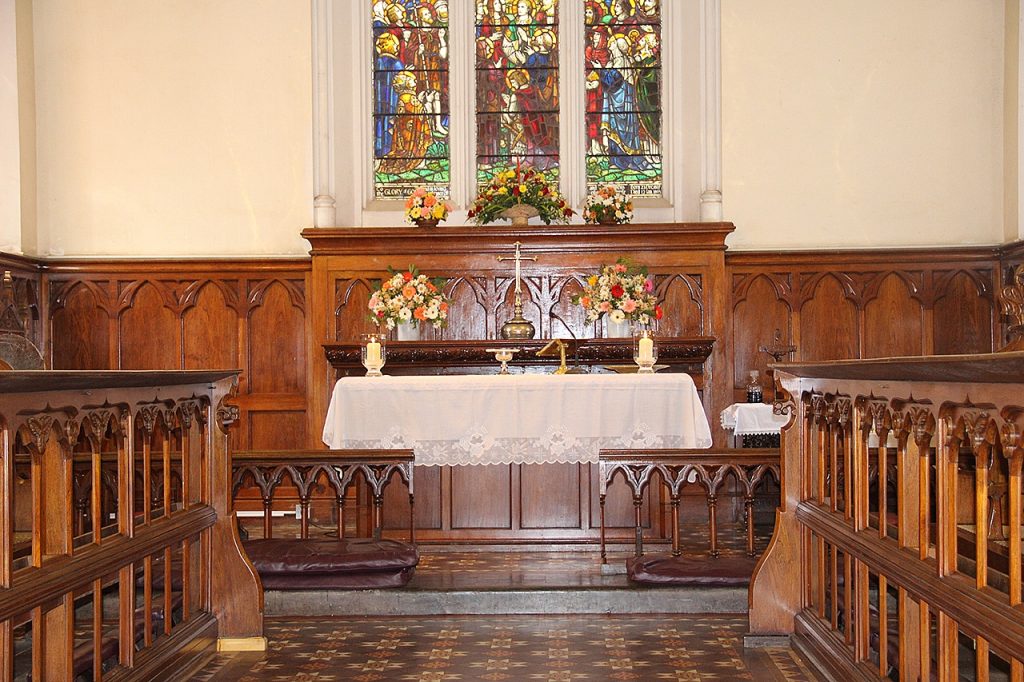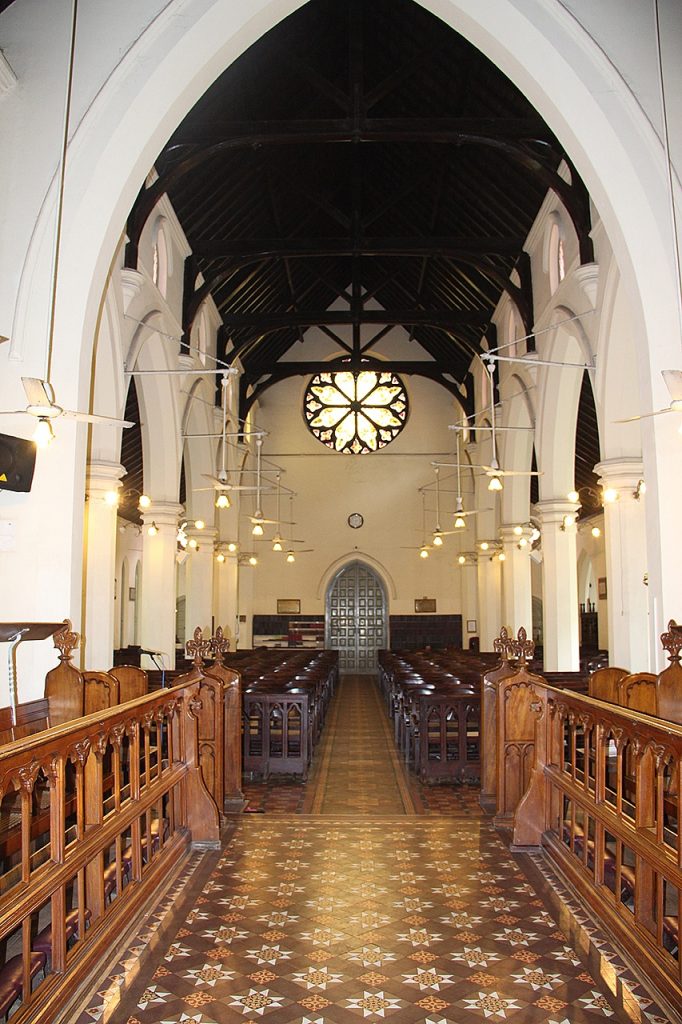One of the oldest Anglican churches in Colombo is Christ Church in Galle Face, built in 1853. It has been part of the city’s history as it attracted all sorts of parishioners from Governors to British administrators. Today, the majestic structure is mildly subdued by five star hotels and high-rise apartments that seem to tower above the church.
Christ Church was begun by the CMS or Church Missionary Society. Known as the CMS Cathedral in those days, the church is a ‘low church.’ Evangelical in its outlook and worship and characterised by simplicity in the order of service and ceremony. The C.M.S. was founded in London in 1799 to send missionaries around the world. In 1818 the CMS sent four missionaries to Ceylon to set up schools and to work among the people. Rev. George Pettitt was the first CMS missionary to arrive in Colombo, in 1850.
It is rather ironic that the origin of a place of worship should be due to a priest who had little to do on Sundays. When Rev. G. Pettitt, was asked to become Secretary of the CMS in Ceylon, “the duties connected with this post were not such as to give him any ministerial work.” It was this that led him to suggest that a Church be built adjoining Slave Island railway station, where he might take regular English services, and thus occupy his Sundays.
The main object of the church’s construction was “The union of races in the Church of Christ”. Its location in Galle Face, in the heart of the city, and its adjoining esplanade just 300 yards ahead at the time, even then a popular meeting point for people of all races and walks of life to ‘take in the sea air’, made the site an eminently suitable one for this purpose.
Christ Church was constructed with pounds sterling, 860 contributed from the CMS in London, and generous donations from the local populace. The foundation stone was laid on 21st January 1853, by the Bishop of Colombo, the Rt. Rev. Chapman. W. A. Tunstall, a British architect, did the original design of the church, free of charge.
On 13th October 1853, the church was opened. A large congregation, representing all three races in the country as well as the European community, attended the dedicatory service by the Bishop.
Rev. Pettit was ailing in health for some time and returned to England in 1855. He was replaced by Rev. William Knight and subsequently Rev. C.C. Fenn, until Rev. Henry Whitley took permanent charge of the church. Rev. Whitley worked among about six thousand people living in and around Slave Island, including Malays, the soldiers of Ceylon Rifles brought in by the Dutch, ministering in all three languages. His incumbency of the Church is remembered even today chiefly because of his sudden and tragic death as a result of an old school wall falling on him in November 1860 while he supervised construction.
The initial structure was small, built with local materials, mainly of kabook. Over the years the church changed faces many times, although the initial architectural language and internal layout remained unchanged.
In 1897, the West wall fell, due to the deterioration of its kabook from heavy monsoon showers. The church was rebuilt on its old design in brick at a cost at Rs 34,150, with old materials also used to reduce the cost. The foundation stone of the ‘new’ church was laid on 14th June 1898 by the Bishop of Colombo, the Rt. Rev. R. S. Copleston.
Its construction in Early Gothic style features a pointed arch nave arcade and king post roof bracing into a succession of flying buttresses. The emphatic verticality of both elements and structure soar upwards to heaven and towards God, as if defying the strength of gravity. Stained glass had been used for the windows in the sidewalls of the sanctuary, as well as the intricately set East window and the Rose window with their profusion of colours. Mosaic is placed in the Church floor in a repeating geometrical pattern.
The interior is also refined with the timber carvings on pews and the stands where intricate foliage traceries are engraved. There are three stained glass windows behind the main altar. The church has a very high roof, laid with local tiles.
The church received electricity in 1914. The building of the belfry began in 1918 and was dedicated on 30th June 1919. The bell, weighing one ton, was donated in memory of Lt. C.M.G. William Wilson Mitchell, by his widow.
During the Second World War allied troops were stationed in Colombo and other strategic areas. Their tasks were harbour defence and air defence. Colombo was frequented by hundreds of men from the Royal Army, Air Force and Navy. In addition to these British troops, there were other allied soldiers serving from Canada, New Zealand, Australia, Africa and America. Most of the key military installations were around Fort, Slave Island and Colpetty – and some of them still persist. This created a need for these men to attend church service on Sundays, and their choice was this church. Christ Church Galle Face.
The Bishop of Colombo had instructed the vicar to accommodate the spiritual needs of these men. Soon the church services were filled and overflowing with allied airmen, sailors and soldiers who gladly mingled with the locals.
The vicar had begun a canteen to feed these men, and the church became a ‘home away from home’ where these men often met for fellowship and to seek divine blessings. The canteen did not make much profit but was an arm of divine service, an extension of brotherhood. The locals made new friends and it is said that some girls even found matrimonial prospects.
The cross on the top of the church was placed in 1954. The church lost its adjoining school to the government. In 1961, in 1978, 34 perches were given to the Duplication Road expansion project. In 1981, 40 perches were sold to Hatton National Bank.
Now Christ Church – Galle Face consists of two parishes – the English and the Tamil.
The church nestles on a lush green lawn. As you enter from the side door the first view that overpowers your senses is the massive stained glass window at the rear. The rose window with eight radiating bars is a wonderful work of art. The East window shows Jesus Christ, and below him are the Roman soldiers. The archangels Michael and Gabriel stand in reverence. John the Baptist, some monks and a Bishop are seen gazing up looking at the perceived New Jerusalem.
A British flag is kept on the right side at the rear entrance. This flag attached to a wooden pole is said to be more than 100 years old, and was used for ceremonial military services held in the church by the Royal Army.
Credit – Christ Church, Sunday Observer











Loading…
Loading…